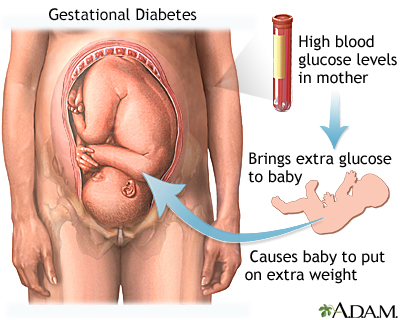
Gestational Diabetes: A Comprehensive Guide
Introduction
Gestational diabetes mellitus (GDM) is a type of diabetes that develops during pregnancy. It affects approximately 2-10% of pregnant women in the United States. GDM is caused by hormonal changes during pregnancy that make it harder for the body to use insulin, a hormone that helps glucose enter cells for energy.
Risk Factors
Certain factors increase the risk of developing GDM, including:
- Age (over 35)
- Family history of diabetes
- Obesity or overweight
- Previous history of GDM
- Certain ethnicities (e.g., Hispanic, African American, Asian)
- Polycystic ovary syndrome (PCOS)
Symptoms
Most women with GDM do not experience any symptoms. However, some may notice:
- Increased thirst
- Frequent urination
- Fatigue
- Blurred vision
- Frequent infections
Diagnosis
GDM is typically diagnosed between 24 and 28 weeks of pregnancy through a glucose tolerance test (GTT). The GTT involves drinking a sugary drink and then having blood drawn to measure glucose levels at various intervals.
Treatment
The goal of GDM treatment is to keep blood sugar levels within a healthy range to prevent complications for both the mother and baby. Treatment options include:
- Dietary changes: Eating a healthy diet low in carbohydrates and sugar can help manage blood sugar levels.
- Exercise: Regular physical activity can improve insulin sensitivity and lower blood sugar levels.
- Insulin therapy: If dietary changes and exercise are not enough to control blood sugar levels, insulin injections may be necessary.
Complications
Uncontrolled GDM can lead to complications for both the mother and baby, including:
Maternal complications:
- Preeclampsia (high blood pressure during pregnancy)
- Preterm labor
- Cesarean delivery
- Type 2 diabetes later in life
Fetal complications:
- Macrosomia (large birth weight)
- Hypoglycemia (low blood sugar) after birth
- Respiratory distress syndrome
- Increased risk of obesity and type 2 diabetes later in life
Management
Managing GDM involves:
- Regular blood sugar monitoring: Blood sugar levels should be checked several times a day using a blood glucose meter.
- Dietary modifications: Eating a healthy diet low in carbohydrates and sugar is crucial.
- Exercise: Regular physical activity is recommended to improve insulin sensitivity.
- Medication: Insulin therapy may be necessary to control blood sugar levels.
- Regular prenatal appointments: Regular appointments with a healthcare provider are essential to monitor blood sugar levels and the baby’s growth.
Prevention
While not all cases of GDM can be prevented, certain lifestyle changes may reduce the risk, including:
- Maintaining a healthy weight before and during pregnancy
- Eating a healthy diet
- Getting regular exercise
- Managing blood sugar levels if diagnosed with diabetes before pregnancy
Long-Term Effects
Women with GDM have an increased risk of developing type 2 diabetes later in life. Regular blood sugar monitoring and lifestyle modifications are important for preventing or delaying the onset of type 2 diabetes.
Conclusion
Gestational diabetes is a common condition that can develop during pregnancy. It is important for pregnant women to be aware of the risk factors, symptoms, and treatment options for GDM. By following a healthy lifestyle and working closely with a healthcare provider, women with GDM can manage their blood sugar levels and reduce the risk of complications for both themselves and their babies.